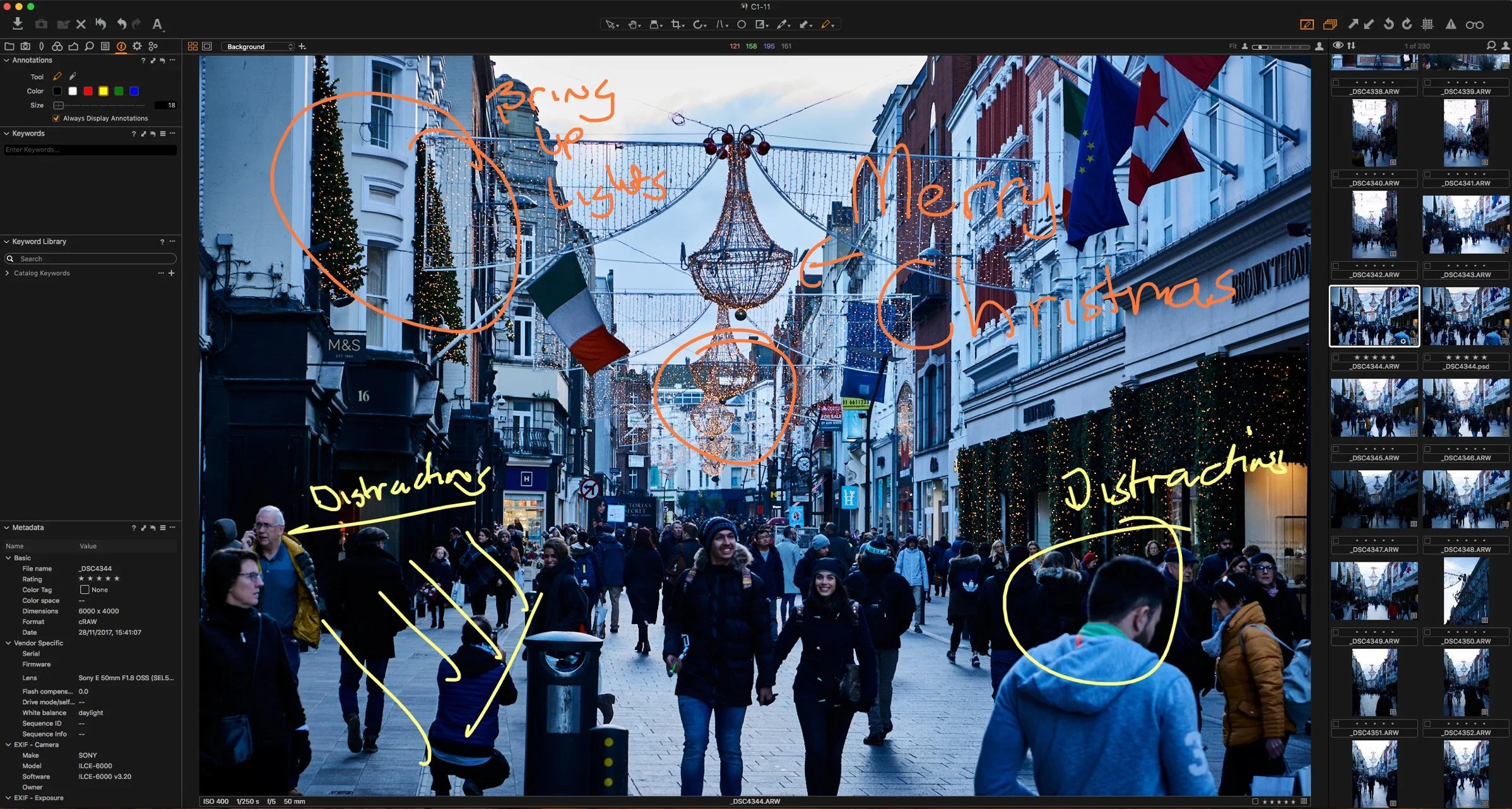Capture One 11
Yesterday Phase One released the newest version of Capture One, Capture One 11. This new update features several major new features as well as some changes under the hood. The biggest difference in the upgrade is the new layers system, but there are also a lot of little features too.
The new software replaces the old selective adjustments feature with a new layer based system that’s pervasive throughout the software. Almost all adjustments can now be applied in layers, and you can control the opacity of each layer, and there are improvements to the masking options too. Masks can now be refined, and it includes tools for changing the feathering of masks and so on.
What I find really interesting about this is that it’s another example of applications moving away from the traditional raw processing interface style that originated with Adobe camera raw, Apple’s Aperture, and then later with Lightroom. While Lightroom sticks to the same interface metaphor, even with the new CC, other applications are moving on and finding new and different ways of working, and so it’s interesting to see how this develops.
There are some real benefits to this system. If you work in layers, and you find an effect or adjustment is too strong, rather than trying to tweak multiple adjustments to tone down the effect, you can just fade down the layer using the opacity adjustment. Even in the short period that I’ve been using this, it’s already changing the way I work.
The other big headline feature is the new annotation tool, which lets you write notes on your image. These are stored as metadata, and you can also export them with your image as a layered photoshop file. This is ideal for collaborating in a team where you may want to pass an image on to a retoucher for example. Or even just to send an image to a client with notes.
Capture One 11 Annotation Tools
Performance has also been improved. I’ve been using the beta for a few weeks, and I have definitely noticed a difference. In fact, when I was recording videos, I had to go back to version 10, and I found it noticeable having to go back a version, which says something in itself. And my system is getting old too (2012 mac pro).
For Fuji shooters, there’s no significant changes to the processing engine, and if you use my techniques for processing Fuji files with Capture One, the advice stands.
There are lots of smaller updates and new features too. I won’t go into them all on this post, but here are some of the things that are mentioned in the release notes:
> Feather Mask & Refine Mask> Softening the edges of a mask after drawing is simplified with the Feather Mask feature. Avoid having to redraw masks by simply dragging a slider to feather the edges.
The Refine Edge lets you make a more precise edge on your mask. Create a clean and adjustable mask with many uses, for example, picking out hair against a background. Use with the improved Auto Mask function for precision results.
> Export Crop to Path> When applying a crop in Capture One, you can now use the Export Path to include the crop as a path when you export to PSD. By storing the crop as a Path in your exported PSD file, the full image can be used for retouching or even alternate cropping at a later stage.
> Duplicate Checker> The Duplicate Checker makes sure that you don’t import the same file twice in your Catalog or Session. The robust catching-mechanism ensures that importing the difference from the last import is easy and efficient.
You can see the full list of what’s new and a detailed description of the features by downloading the release notes PDF which you’ll find on the Capture One 11 Page. There is a trial version available, so f you’e wondering if its worth the upgrade, download the trail, and try it for yourself.
Help Support the Blog
I’m now on Patreon. If you like what I do here and find the information useful, then you can help by supporting me on Patreon. As well as helping keep this blog going with even more useful news, tips, tutorials and more, members also get special Patreon only perks. Stop by and check it out.
If you like this post then you can see more of my work on Instagram, Twitter and Facebook. I also have a YouTube channel that you might like. You should also check out my other Photography Project: The Streets of Dublin. If you want to get regular updates, and notices of occasional special offers, and discounts from my store, then please sign up for the Newsletter.
You can also show support by buying something from my from my Digital Download Store where I have Lightroom Presets, and e-books available for download. If you're a Fuji X-Trans shooter and Lightroom user, check out my guide to post processing X-Trans files in Lightroom. I also have a guides for processing X-Trans files in Capture One and Iridient Developer. For Sony Alpha shooters I have a new guide with tips on how to get the best from processing your A6000 Images in Lightroom.








